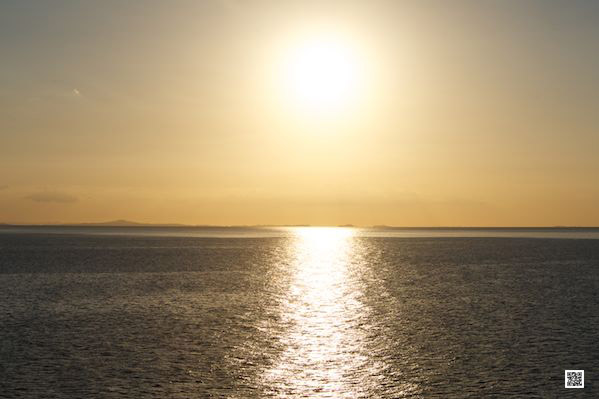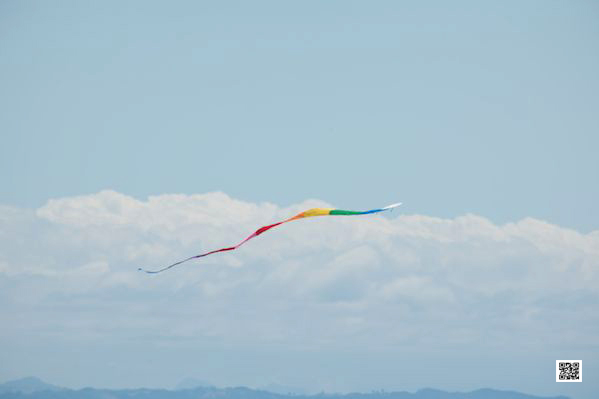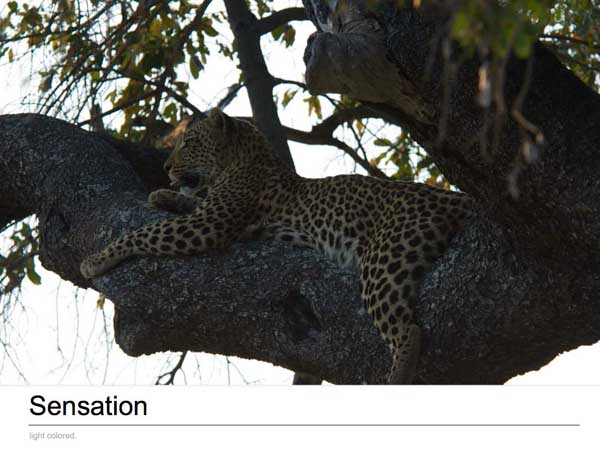10 March 2013
On Photo Safari: Meet the Lion
16/03/13 14:40 Filed in: Photo Safari

On photo safaris probably the most popular events are the stops in the bush for coffee and sundowners. Being right there in the middle of the animals, overlooking beautiful landscape and enjoying a nice cup of coffee or thee. Usually we discuss photographic topics as we are on a photography course, play a bit with the cameras or just chat about anything. Its really nice.
On very rare occasions these stops include animal encounters, bigger animal encounters. The photo above was taken by my student Michelle de Souza when she was safely back in the vehicle and the lioness had made her way to inspect the things on the table. There was no moment that the people were in danger. The lioness was seen in time and all could get back into the safe landrover. Something like that is really very rare and it ended with the lioness walking away with the cookie box.
Happy snapping!
Ute Sonnenberg for www.rohoyachui.com
When Business Leaders Use Photography
15/03/13 12:28 Filed in: B2B

When business leaders use photography the first that comes to mind might be images of top managers on photo safari wildlife photography courses with big telephoto lenses enjoying their hobby during a holiday in Africa.
But there is more. Innovative business leaders use photography as tool in their daily work. No big zoom lens and heavy camera needed, the cell phone is enough or a nice little pocket camera. The photographs are the helping tool with problem solving, strategic planning, team buildings, leadership training, business coaching and endlessly more.
But how does it work? Pretty simple. Whatever question or task the leader/manager is confronted with and struggling to get hold of its essence and the innovative solution, photography comes in to help seeing. The problem or task gets visualized through photographs and the photographer/leader/manager does not even have to leave the office. Photographing with the right mindset will deliver all answers and unearth hidden from plain view solutions. Now they only need to use the information provided and implement solutions and results.
Sounds too easy? It is easy, yet a training is needed to use this amazing tool photography in that way. And from there you just go.
Imagine how easy things get in the office!
Happy snapping!
Ute Sonnenberg for www.rohoyachui.com
Innovative Brainstorming with Photography
14/03/13 12:34 Filed in: B2B

Brainstorming is often the way we try to find ideas regarding a certain project, a new product or for problem solving. We use it in business, in personal life and for creative processes. And we usually talk a lot while brainstorming, using several techniques to tap into our creativity to come up with innovative ideas. Also images are involved, but the semantic plays a major role.
How about using only images to brainstorm? A team is brainstorming about lets say a business issue and using entirely photography to unearth problem solving ideas and concepts. Each member of the team visualizes an idea through photography and shows the image to the colleagues. All team members look at all images, “digest” what they see and take the ideas further; visualizing what potential they see in them. At the end of the brainstorming session the essence of all ideas is left on the screen in form of one or more images for further use to solve the business issue.
These sessions are very efficient and allow leaders to guide their teams to innovation in an intuitive way. They work also for issues within teams and can be used in team buildings e.g. in combination with photographic safari excursions for one or more days. The environment will contribute to the success. But in essence they work anywhere, in meeting rooms in offices, on planes, at conferences and anywhere else.
Try it and by the way they are fun too.
Ute Sonnenberg for www.rohoyachui.com
Philippe Petit: When Art Looks Effortless
13/03/13 12:38 Filed in: Photography & Art

Philippe Petit is the high-wire-walker, famous for walking across the void between the two towers of the World Trade Center in New York in 1974.
“I knew as a wire walker, I would be a poet who writes in the sky. Art happens when you work millions of hours not to make it look hard but to make it look effortless. The beauty for an audience is to be inspired and awestruck because you made them forget that the wire was even there.” Philippe Petit
To make the audience forget that there is a wire, he works incredibly hard before the actual performance, but nobody can see that it is even work what he is doing.
Many great artists create a similar experience like for example the great ballet dancer Nureyev or in music e.g. Sting. Their performances seem effortless.
That can lead to the wrong conclusion that they don’t work and shouldn’t earn money and definitely not those huge amounts, because it doesn’t look like hard work. The same principle applies to any craftsmanship or work that is wonderfully done, from the gardener to the business leader and the painter and the housewife. Behind the appearance of effortlessness hides the most difficult and hard work, making it look effortless itself is hard work.
What does that mean for photography and photographers? One can often hear opinions that photography is no hard work, because it’s only a click on the shutter. When wildlife photography is presented its quality is often explained with the time the photographer had to spend to get the image and the difficulties he/she experienced in the bush. Other photographic artwork gets explained and valued with the hours the photographer had spend behind the computer to make it look like that and the more hours the more worth. But somehow nobody ever says about a photograph that it is great art, because it looks effortless. Is it, because there is controversy about what is art in photography or because people think that the other photographer only got lucky?
I don’t know, but I do know that every artist goes through a creative process with ups and downs and struggle and hassles, a painter, a musician and a photographer. And one can see the difference in the photographs, the story of the photographer is in them and photography itself is the effortless medium to visualize the efforts of the artist.
A creative journey in short is a photographic safari or a wildlife photography course. It’s the photographer and his/her camera that embark on the adventure and the pictures tell their story. The quality of the photos of the first day is different from the photos of the final day, yet they were taking with only a click on the shutter.
Keep working on effortless looking photography. It is not easy to get there, but when you make it, the results are mind-blowing.
Happy snapping!
Ute Sonnenberg for www.rohoyachui.com
Nikon's Awesome New Photo Gear
12/03/13 09:54 Filed in: Technology & Gadgets | Photography & Art

The wildlife photographers who use Nikon camera gear are most likely the ones who had been waiting for years that Nikon comes with a new 80-400 mm f/4.5-5.6 telephoto lens. This lens is very practical on photographic safaris and continuously used during wildlife photography courses all over Africa. It gives the wildlife photographer lots of freedom and flexibility. Ad now the waiting is over! Nikon launched the new lens with absolutely great specs:
Another great new thing to come is the D7100, a very good camera for a reasonable price. Have a look at the specs:
The D7100 is available at B&H for USD 1,196.95. Expected arrival of the camera in the shop is the 14th of March, pre-orders are taken.
So, now only sun, free time to go on photographic adventures and the fun can begin.
Happy snapping! Have fun!
Ute Sonnenberg for www.rohoyachui.com
Annie Leibovitz: Reflection
11/03/13 09:03 Filed in: Photography & Art

Sometimes a photographer needs moments of contemplation to reflect on the work she/he is doing, the photography she/he is doing and how happy one is with what one does. In this video a young Annie Leibovitz is reflecting on her portrait work, how she feels about it and how she experienced photographing John Lennon on the day he was killed. She expresses the wish to have time to be out, only she and her camera for two or three weeks, just to photograph what she wants, sees and loves.
Isn’t this exactly the dilemma when the photography business goes well for a photographer that suddenly there is no time anymore to just enjoy photography in its pure and essential way, just the photographer and the camera and no clutter around? This might be the moment that photography becomes again a hobby for the photographer, as funny as it might sound. And the photography guide starts craving a photographic safari just for him/herself and a photography teacher wishes to attend a photography course just for him/herself.
It is probably the danger when making your hobby and passion your work that you might lose the passion and love for what you are doing. I don’t know how Annie Leibovitz feels about this today, yet its great to hear how she felt about it at a younger age.
Keep having fun and joy when snapping away! Keep listening to your heart.
Ute Sonnenberg for www.rohoyachui.com
ePhoto Book: Sensation
10/03/13 10:56 Filed in: Photography & Art

The Okavango Delta in Botswana is one of the most beautiful destinations for photographic safaris. The light is just sensational and even with an entry level photography equipment one can take the most amazing pictures.
Images from photo safaris to the Okavango Delta can always be identified easily, the light is different from any other place and photographers heaven.
The images of this book were not taken during a photography course, just when traveling for photo fun to the delta.
Click for the ephoto book here.
Enjoy!
Ute Sonnenberg for www.rohoyachui.com